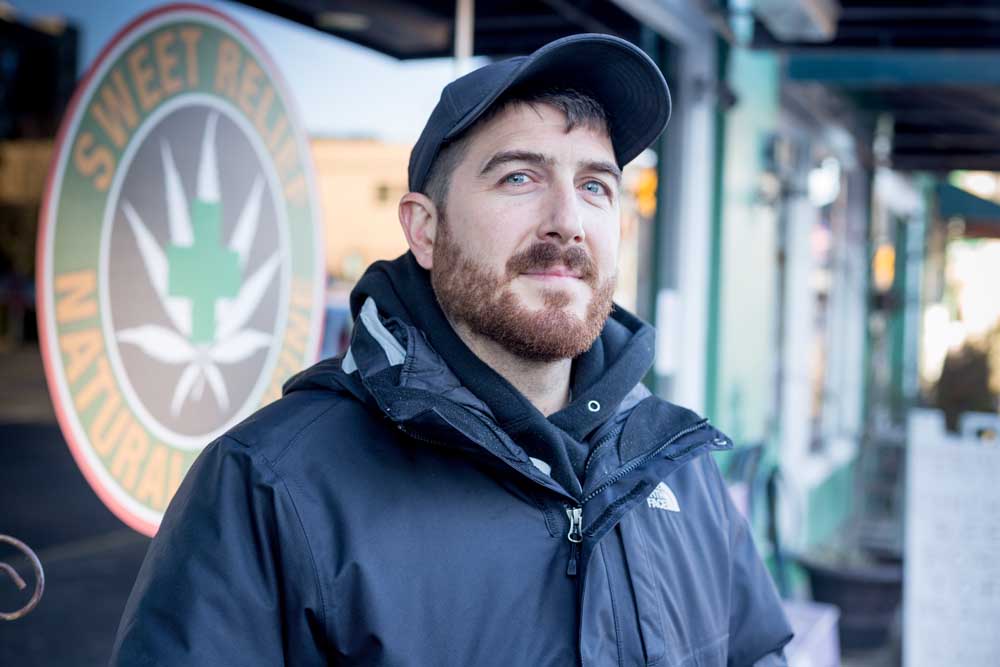Oregon dispensary sales shrink
Published 4:25 am Sunday, January 8, 2017

- “The bud is the backbone of the business, but a quarter of the business has been drastically impacted,” said Oscar Nelson, co-owner of the Sweet Relief Dispensary in downtown Astoria. Nelson estimated that sales in edibles and concentrates had shrunk 50 percent since the new testing regulations took effect in October.
ASTORIA — Oregon marijuana dispensaries have been reeling since October, when increased testing standards became required at certified labs. The result has been an immense backlog of extracts and edibles being delayed in distribution and dispensaries around Clatsop County have been directly impacted by the bottleneck.
“The last two months were a nightmare,” Omar Guerrero, co-owner of The Farmacy said. “We didn’t have edibles or extract because of the new lab test requirements. It delayed everything. We suffered. We had all the products then we had nothing for a little more than a month.”
Beginning Oct. 1, all cannabis being sold to dispensaries and entering the market had to meet new testing standards by labs that were properly certified to do the testing. However, only a handful of labs are yet certified to do pesticide testing, resulting in delays. The Farmacy relies largely on Portland-based CURA Cannabis Solutions for oils, concentrates and edibles. However many of the products they used to carry simply haven’t been available because of a backlog in testing requirements and a lack of certified labs.
Since the start of the new regulation, Guerrero estimates that sales of edibles and extracts has fallen 40 percent, but he remains optimistic that the sales and customers will return once the product does.
“Those customers will come back when they find out the product is back on the shelf,” Guerrero said.
Currently, there is only one offering on the shelf, a $20 single-serving when typically there are dozens of options ranging from $5 lollipops to $20 artisan chocolate.
In response to the delays and lack of product reaching dispensaries, the Oregon Health Authority (OHA) adopted temporary testing rules effective Dec. 2 through May 30, 2017 which has allowed a trickle of product to reach shelves, but the damage has already been done to two dispensaries in Astoria who have seen sales of extract and edibles collapse over the past eight weeks in wake of the new testing standards.
“We got our first batch of edibles yesterday (Wednesday, Dec. 14),” Guerrero said adding that he’s hopeful more product could arrive any day. It had been since November that he’s last had a full supply of edibles and extracts. The scene was similar at another dispensary down the street.
“The bud is the backbone of the business, but a quarter of the business has been drastically impacted,” Oscar Nelson, co-owner of the Sweet Relief Dispensary in downtown Astoria said. Nelson estimated that sales in edibles and concentrates had shrunk 50 percent since the new testing regulations took effect in October.
“Getting tested product has been crazy. OHA has a huge backlog and very few producers and extractors,” Nelson said.
“You’ve got less producers, fewer people bringing product to the market and that same product is going through a much more stringent funnel. It’s like we’ve got several bottlenecks back-to-back.” Since the change in regulation, Nelson estimates that he’s lost 33 percent of the edibles and concentrates he used to carry, and customers came to expect.
“The inconsistency of the business through the market fluctuations has caused customer volatility,” Nelson said. “We’ve had customer falloff.”
The regulation has been a roller-coaster of highs and lows, according to Nelson.
“This is the third iteration of the market emerging and then subsiding,” Nelson said. “People have seen their dream come and fade. People are getting frustrated because brands are coming and going, known products are coming and going. It’s like there’s no consistency. The state is doing the best they can, but it’s a screwed up situation.”
The new testing regulations puts Oregon dispensaries at a disadvantage to their counterparts just across the bridge in Washington, Nelson said.
“I think we’re disadvantaged through the testing,” he said. Nelson ultimately believes that industry regulation and consumer confidence will eventually stabilize, but patience is paramount.
“Customers need to realize this had been a bunch of experiments on the state level, none of this had been set in stone,” Nelson said, “After Jan. 1 is really when the game starts and the market won’t stabilize until St. Patty’s Day 2018. Give it another year and a couple months. The landscape, consumer base and amount of available products are going to stabilize.” Once the market and regulation settle, Nelson believes there will be more marijuana edible and concentrate products than ever before, but it will just take time to get through the backlog of new applicants.
“There’s like 800 new producers with applications in,” Nelson said.
“These shops are going to be like mini markets of variety with thousands of different options of edibles, topicals and concentrates. There’s so much innovation going on with this market, it really hasn’t even started yet.” Among the emerging innovations mentioned by Nelson was a cannabis-infused tampon that can reportedly help reduce cramps for women within 20 minutes. However, only time will tell what, and when, the new products will arrive on dispensary shelves.


